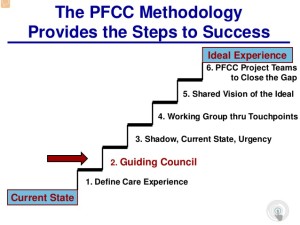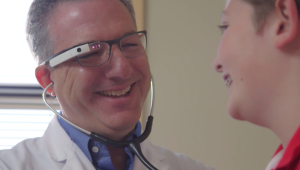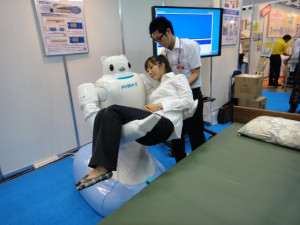Can old-fashioned values and technology exist together in healthcare? Yes.
Values are by nature subjective, but in the provision of an effective healthcare system, one would hope these ideals should be consistent throughout. The phrases ‘patient-centered care’, ‘a healthcare system that provides for all’ and provider of ‘effective cost effective care’; seem to be the traditional watchwords of many healthcare systems, free standing hospitals and healthcare centers. They also seem to be values that share a timeless quality. In this new technological age, many healthcare systems are adopting these ideas, investing in new technologies which are potentially leading to the betterment of patient-centered care, improved cost effectiveness and wider provision.
Research
Many organizations such as Planetree (http://planetree.org/solutions/), whose focus is to aid healthcare providers in offering an improved patient-orientated service, are available to help healthcare services excel and meet guidelines in patient-centered care.
 Research by Anthony M. DiGioia et al (2016) into the use of a six step patient-centered model called the Patient Family Centered Care Methodology Practice (PFCC M/P) used by the North Carolina based Wake Orthopaedics services, has shown improved results in efficacy of service. Results include increased patient satisfaction (from 80%-93%) and decreased readmissions for ‘elective primary knee and hip surgery’ (6.2%-3.6%). Other hospitals such as the Harvard Van Guard Hospital, used some of the core ‘tenets’ of the PFCC M/P when renovating its department providing “more privacy to women being weighed and improving staff collaboration” after findings indicated a lack of trust “that clinicians were working as a team”. (http://journalofethics.ama-assn.org/2016/01/stas1-1601.html)
Research by Anthony M. DiGioia et al (2016) into the use of a six step patient-centered model called the Patient Family Centered Care Methodology Practice (PFCC M/P) used by the North Carolina based Wake Orthopaedics services, has shown improved results in efficacy of service. Results include increased patient satisfaction (from 80%-93%) and decreased readmissions for ‘elective primary knee and hip surgery’ (6.2%-3.6%). Other hospitals such as the Harvard Van Guard Hospital, used some of the core ‘tenets’ of the PFCC M/P when renovating its department providing “more privacy to women being weighed and improving staff collaboration” after findings indicated a lack of trust “that clinicians were working as a team”. (http://journalofethics.ama-assn.org/2016/01/stas1-1601.html)
Technology
 To meet this new need for humanization in the highly technical environment of healthcare, new innovators, such as Augmedix; who has recently secured $17 million of strategic investment from 5 healthcare providers, have stepped forward. Augmedix created an EHR platform to work with Google glasses, ensuring physicians are free to spend more quality face-time with patients. (http://www.massdevice.com/google-glass-startup-augmedix-raises-14m-strategic-investment-round/)
To meet this new need for humanization in the highly technical environment of healthcare, new innovators, such as Augmedix; who has recently secured $17 million of strategic investment from 5 healthcare providers, have stepped forward. Augmedix created an EHR platform to work with Google glasses, ensuring physicians are free to spend more quality face-time with patients. (http://www.massdevice.com/google-glass-startup-augmedix-raises-14m-strategic-investment-round/)
 Other devices of a more robotic kind, such as the RIBA robot, take the physical strain off nurses, preventing potential back injury due to lifting patients out of a wheel chair and on to a bed, or between beds. This solves a big problem for healthcare providers as, very often, the nurse on duty may not be strong enough to lift a patient, which could potentially cause them serious injury. This ensures greater efficacy and higher safety of healthcare provision. (https://getreferralmd.com/2016/01/11-biggest-innovations-health-care-technology-2016/)
Other devices of a more robotic kind, such as the RIBA robot, take the physical strain off nurses, preventing potential back injury due to lifting patients out of a wheel chair and on to a bed, or between beds. This solves a big problem for healthcare providers as, very often, the nurse on duty may not be strong enough to lift a patient, which could potentially cause them serious injury. This ensures greater efficacy and higher safety of healthcare provision. (https://getreferralmd.com/2016/01/11-biggest-innovations-health-care-technology-2016/)
In both the fields of research and technology, the traditional approach focusing on patient-centered care and effective low-cost care provision is receiving further credence and refinement. In research by DiGioia and his team, who developed the PFCC M/P model, they found measured improvement in cost effectiveness, patient satisfaction and efficacy of service. In the area of technology and robotics, innovations such as Augmedix and the nurse RIBA robot are aiming not only to ensure an improvement of patient centered care, but also a service committed to excellence. This shows that the traditional values held by healthcare providers through the ages such as patient central care can be combined with innovative research and new technology. A win-win for sure.
References
http://planetree.org/solutions/
http://journalofethics.ama-assn.org/2016/01/stas1-1601.html
http://www.massdevice.com/google-glass-startup-augmedix-raises-14m-strategic-investment-round/
https://getreferralmd.com/2016/01/11-biggest-innovations-health-care-technology-2016/


